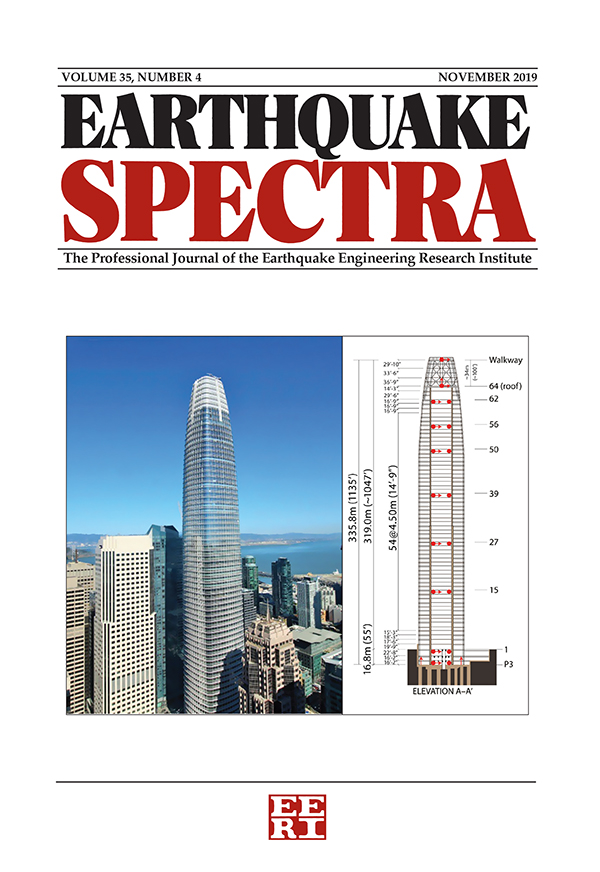On the utility of story loss functions for regional seismic vulnerability modeling and risk assessment
IF 3.7
2区 工程技术
Q2 ENGINEERING, CIVIL
引用次数: 0
Abstract
Vulnerability functions relate loss to seismic intensity and can be developed via several approaches. They are a fundamental part of seismic risk assessment on a regional level and support decision-making and intervention strategies aimed at reducing risk. This article discusses a prominent analytical approach to developing seismic vulnerability models for buildings based on equivalent single-degree-of-freedom (SDOF) modeling, fragility function, and damage-to-loss model integration. The fundamental assumptions are scrutinized, and their principal drawbacks are highlighted. An alternative approach also based on an equivalent SDOF modeling approach is discussed but instead capitalizes on story loss functions (SLFs) as a means to more accurately compute economic losses and their sources. The main benefit is that the contribution of floor acceleration-based losses can be directly considered, and the disaggregation of losses is fully represented. A case study comparison is presented to highlight the similarities and key benefits. It is seen that the SLF-based approach can provide a much more comprehensive means to compute and communicate loss contributions among different element groups (i.e., structural, non-structural, and contents) and individual stories along the building height. Existing models can simply be adjusted to this approach and provide a more holistic view of risk. The benefits and potential applications in the (re)insurance sector are also discussed.论区域地震脆弱性建模和风险评估中故事损失函数的实用性
易损性函数将损失与地震烈度联系起来,可通过几种方法制定。它们是区域一级地震风险评估的基本组成部分,支持旨在降低风险的决策和干预战略。本文讨论了一种基于等效单自由度(SDOF)建模、脆性函数和损伤-损失模型集成的建筑物地震脆弱性模型开发的重要分析方法。对基本假设进行了仔细研究,并强调了其主要缺点。还讨论了另一种同样基于等效 SDOF 建模方法的方法,但该方法利用了故事损失函数(SLF),以此更准确地计算经济损失及其来源。这样做的主要好处是可以直接考虑基于楼层加速度的损失,并充分体现损失的分类。通过案例研究比较,突出了两者的相似之处和主要优点。可以看出,基于 SLF 的方法可以提供一种更全面的方法,用于计算和交流不同元素组(即结构、非结构和内装物品)以及建筑物高度上各个楼层之间的损失贡献。只需根据这种方法对现有模型进行调整,即可提供更全面的风险视图。此外,还讨论了(再)保险领域的优势和潜在应用。
本文章由计算机程序翻译,如有差异,请以英文原文为准。
求助全文
约1分钟内获得全文
求助全文
来源期刊

Earthquake Spectra
工程技术-工程:地质
CiteScore
8.40
自引率
12.00%
发文量
88
审稿时长
6-12 weeks
期刊介绍:
Earthquake Spectra, the professional peer-reviewed journal of the Earthquake Engineering Research Institute (EERI), serves as the publication of record for the development of earthquake engineering practice, earthquake codes and regulations, earthquake public policy, and earthquake investigation reports. The journal is published quarterly in both printed and online editions in February, May, August, and November, with additional special edition issues.
EERI established Earthquake Spectra with the purpose of improving the practice of earthquake hazards mitigation, preparedness, and recovery — serving the informational needs of the diverse professionals engaged in earthquake risk reduction: civil, geotechnical, mechanical, and structural engineers; geologists, seismologists, and other earth scientists; architects and city planners; public officials; social scientists; and researchers.
 求助内容:
求助内容: 应助结果提醒方式:
应助结果提醒方式:


